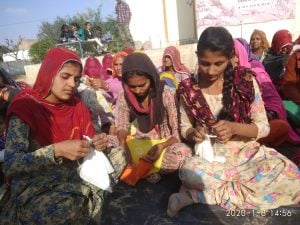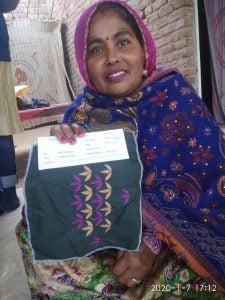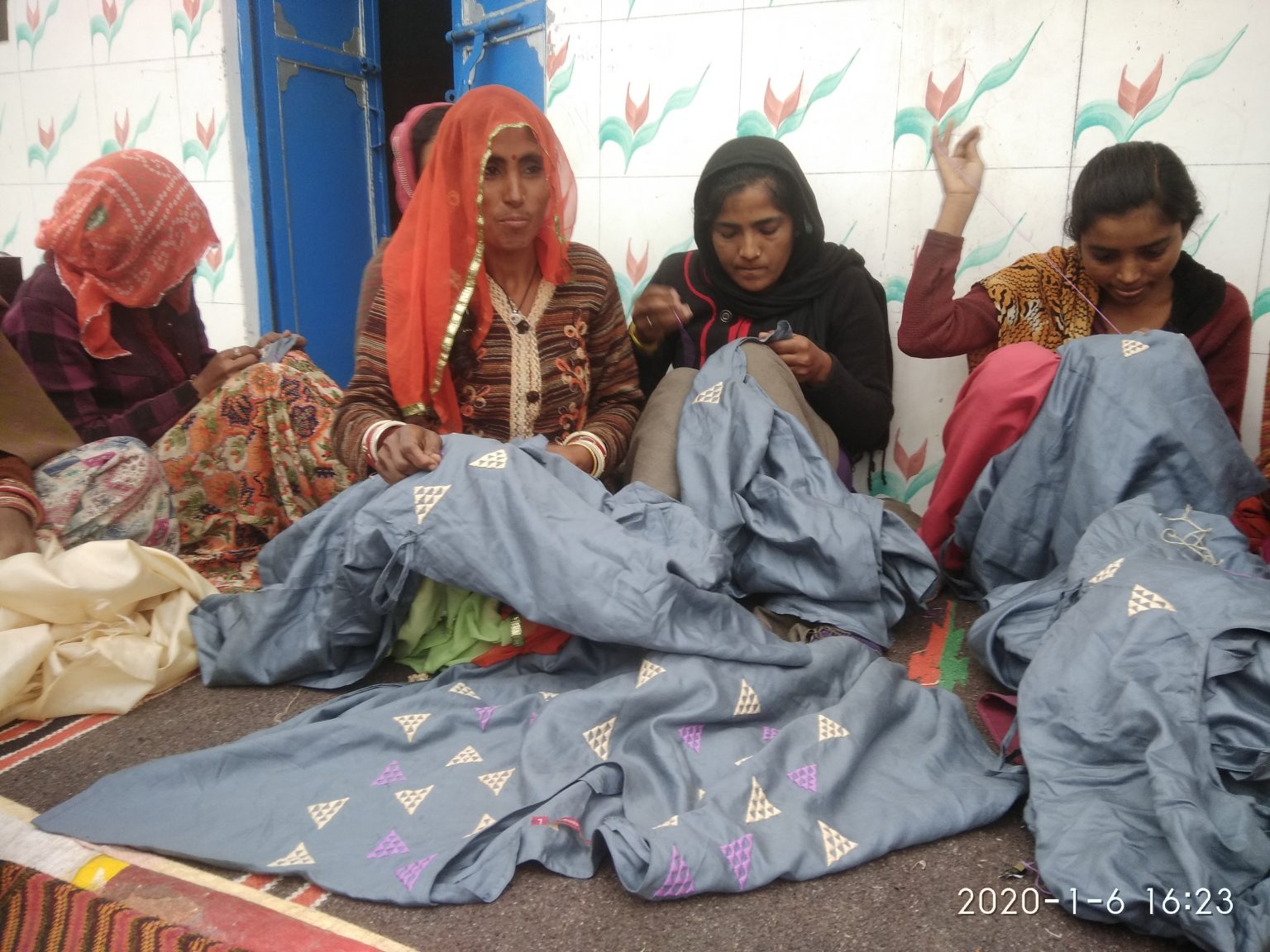The Karni Mata temple in Bikaner is a temple where rats are worshipped and fed. To see a white rat among all the black and grey rats is considered great fortune. I could not spot a white rat during my trip to Bikaner, but I would still call myself fortunate. If not the white rat (who is considered the embodiment of Karni Mata), I met several women, who have battled harsh weather, an arid terrain, stunted vegetation and a patriarchal society to eke out a living and live with dignity. These strong-willed women are the goddesses of Thar desert, whose stories inspire us.

Among all the six sparsely populated villages I visited (Napasar, Ganganagar, Jodhasar, Deli Talai, Mankasar, and Runia Badabaas), there was a common sight to behold. Women, young and old, busy, working together, carefully crafting garments, and other household furnishings. These women have been trained under the Skill to Succeed. The project is being run by Urmul Rural Health Research and Development Trust and supported by Accenture and OneStage.
Santosh, from village Runia Badabaas describes her journey towards empowerment: “The project has been my pillar of strength after my husband died a few years ago. I started my career as a cook in Urmul Trust. The NGO supported me and crafted my skills. Two years ago I became a senior trainer with the Skill to Succeed project. I learnt the art of natural dyeing, block printing, macramé, and crochet and I love them to the core.” “After I graduated as a trainer, I was able to train many artisans, who have set up their own small scale business,” adds Santosh.

Skill to Succeed focuses on the vulnerable and marginal sections of the society –women and children. This initiative has proven to be a platform for creating and enhancing sustainable livelihoods for rural women artisans to earn a better living with dignity in the drought-prone areas of western Rajasthan. Through the project, artisans are not only trained (in stitching, applique, tie-dye, mukka embroidery, natural dyeing and crochet), but they are also connected to their clientele, without any middlemen, ensuring that the artisans get a good price for their products.
Rangoon Bai, another artisan from Mankasar has successfully generated and order worth ₹7 lakh for her village artisans’ group. She has a remarkable story too. She stood up to the men in her village, including the craft center manager, where she used to work, and came to Urmul to demand a job. “I turned out to be a good trainer. I have been able to train up to 40 women artisans in just about seven to 15 days.”
Rangoon Bai practiced Kashidakari (embroidery) since childhood but never really took it seriously. “The programme not only helped me to enhance my skills but also improved my aesthetics. I learned about color combinations, work ethics, and quality control.”
The traditional handicrafts market, which has been a regular means of livelihood for over 20 million artisans in rural India is presently on the decline. Lack of skills and a market have led to the devaluation of the products. It is no longer considered to be a sustainable source of living. Though the Handicraft and Handloom sector is a Rs. 24,300 crore industry contributing Rs. 10,000 crores to India’s export earnings annually, it contributes to only 2% of the global market for handicrafts of USD 400 billion.
In spite of its potential to generate huge employment, most of the wealth creation is limited to only a few master artisans exposed to national and international markets, urban designers and big social enterprises procuring crafts goods from the artisans wherein the actual artisans continue to work as wage based laborers. They lack bargaining power, information and access to new markets, access to finance, working capital, business and entrepreneurial skills and capacity to innovate products for new markets.
“There is the need to empower women artisan groups through professionalization of their craft skills for sustainable enterprise development and bringing them into the mainstream economy,” says, Ramesh Saran, Chief Finance Manager Urmul.“This requires capacitating and handholding the women artisans through the value chain through a systematic and holistic business incubation programme addressing entrepreneurship development including institutional design, business planning training, financial literacy, product development, technology support, outreach support, working capital and direct market access,” he adds.
This couplet sums up this story of hope:
There is a serpent on your chest,
Oh land of dunes rise and awake,
Open your eyes to reality,
Leave the false illusions.
The poor women artisans have identified their capabilities and experiencing self-reliance. They are becoming self-sufficient through their artisanal works. So the next time you wear your hand-embroidered kurta, or look at your handmade diary or the colorful tea-light holders at home, spare a though for the hands that created them.
Search
Categories
Recent Posts
- A brief visit to a project site in Gurugram
- How was OneStage born?
- ‘The plight of people moved me, and the heroic efforts of frontline workers inspired me to support COVID Relief work’
- 7 ways to take care of your Mental Health during the pandemic
- 5 things you must keep in mind before forwarding information on COVID












.png)

.png)

